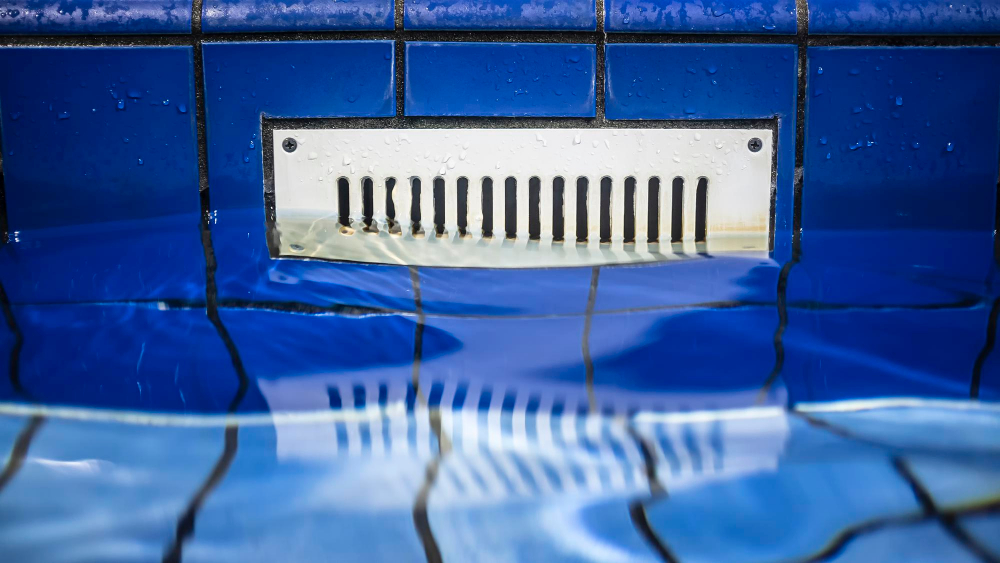For indoor swimming pools, a ventilation system is a necessity beyond mere ventilation. These systems are installed to exhaust water vapor that evaporates from the pools, meet the fresh air flow requirements of people inside, prevent condensation on cold surfaces, and fulfill a significant portion of the heating needs.

In Olympic pools, the water temperature should be between 24 and 28 degrees Celsius. The ambient temperature should be 2-3 degrees higher than the pool water. The relative humidity should be maintained between 50% and 60%.
Indoor swimming pools generally use large windows. In such spaces, systems that provide blown hot and dry air from beneath the windows upwards, with dehumidifying capabilities, are quite successful. This approach not only solves the problem of bringing hot air down to the ground but also prevents condensation on the windows. Linear type vents are used in these systems. The vents are fed by ducts passing through the floor of the lower level.
If there are stands in Olympic pools, a separate air conditioning plant should be installed, and feeding should be done this way. In the case of feeding from a separate plant, a separate zone should be created. During winter months, the temperature of the blown air should be between 40 and 50 degrees Celsius. Extraction should be done from the ceiling. It is extremely important that the vents chosen for ventilation systems are corrosion-resistant. Exhaust ducts, on the other hand, should be insulated against condensation.
In Olympic indoor swimming pools, ventilation is mandatory for the health and comfort of swimmers. A pool without a ventilation system will not only lead to serious health issues but will also provide an extremely uncomfortable experience. Due to the number of people inside and the temperature of the pool water, condensation is a significant issue in pools. The best solution to this problem is the installation of a ventilation system. The system to be installed is also crucial for the exhaust of water vapor caused by the pool water, in addition to providing ventilation.
The installation of ventilation systems, which also contribute to heating systems besides preventing condensation, is extremely necessary for the comfort of your clients. Ventilation systems play a significant role in dispersing dense steam air that can form on the surface and ensuring the circulation of clean, fresh air inside.
Ventilation systems provide numerous benefits in indoor Olympic pools and all areas where they are used. Utilizing these systems eliminates risks that could threaten the health of swimmers and ensures comfort. This allows swimmers to spend much longer periods in the pool. Ensuring customer satisfaction will bring significant contributions to your business in the medium and long term.
Ventilation systems installed in Olympic pools will offer many different benefits. Firstly, these systems can provide 70 to 80 percent of the heating in the enclosed pool area, with the remaining smaller portion being supplied through floor heating methods. This setup will result in significant heating savings, which will reflect on your energy bills in the short term and lead to substantial gains in the long term.
Additionally, these systems will greatly contribute to the health of those exercising in the Olympic pool. From the moment a ventilation system is installed, significant air circulation between the indoor space and the outdoors begins. This ensures the air inside remains always fresh and clean, which is extremely important for customers choosing your facility.
Olympic pools are heated for use, which leads to significant evaporation in these areas. Vapor can have serious negative effects on both the equipment in the space and the structure's health. Olympic pool ventilation systems make it possible to prevent these adverse effects. This means both the lifespan of the equipment used in the pool and the structure itself will be much longer.
Installing a ventilation system in an Olympic pool is a task that should be undertaken by professionals and chosen carefully. There are many points to consider when installing a ventilation system in an indoor pool, especially a custom design must be made considering the structure that houses the indoor pool. During the planning phase, decisions on where and how to install supply and exhaust units must be made entirely by experts. Additionally, it would be beneficial to seek expert advice on what types of duct and filter systems should be used.
For the proper functioning of Olympic pool ventilation systems, protecting the system from condensation is extremely important. Moreover, the lifespan of a system that is not resistant to corrosion will be very limited. Installing a system based on all these technical needs and the structure of the pool can be done with expert consultation. The size of the space and the number of people it serves are also significant factors. These factors must be considered to install the correct ventilation system.
ERF Group will meet all your needs for installing the right ventilation system for your Olympic pool. Our experts will examine the structure of your pool, conduct a detailed analysis, and identify the necessary system requirements. You can contact us for detailed information on pool ventilation systems and consider our experts' recommendations.